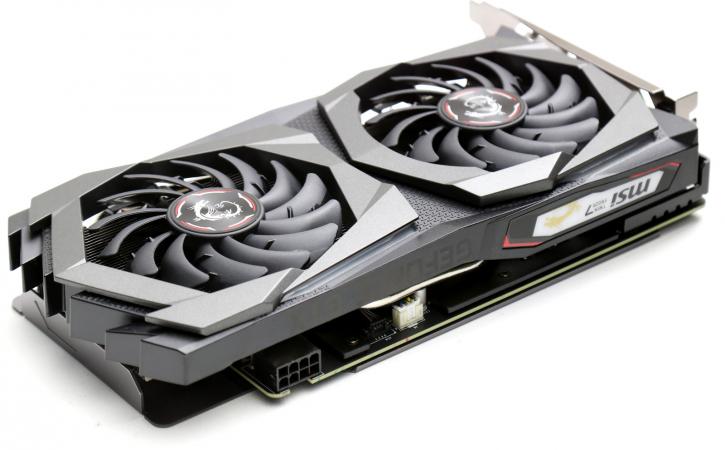Introduction
MSI GeForce GTX 1660 X Ti GAMING X 6G review
We review the new MSI GeForce GTX 1660 Gaming X edition and yes you read it right ... the non-Ti version. The new product is more value targeted and sits in NVIDIA's new mainstream line of the GTX 1660 series products. MSI has already factory tweaked the card a notch for you. You get all the good stuff, yet without RTX features and Tensor cores close to a price of $239,-
We mentioned this a couple of times before, but initially, when the first rumors on the GeForce GTX (yes, with a G) surfaced, speculation was everywhere and we had doubts NVIDIA would actually release a new GTX while moving forward towards it's RTX branding. But yes, NVIDIA is now injecting a Turing based GPU into the mainstream called TU116. To make it more affordable NVIDIA stripped away the RTX and DLSS features, that means there are no RT and Tensor cores on this GPU. It's a fall back towards the original shader design model. And that's where we land today with this review. The TU116 based 1660 GPU has 1536 shader for the Ti model and 1408 shader cores (aka CUDA cores / Stream processors) tied to 6GB of memory for the regular 1660 (non-Ti). So you can choose two video card series based on the same chip, the GTX 1660 and the 1660 Ti. The Ti variants we have seen in the first launch wave and thus will get GDDR6 graphics memory, the non-Ti is fitted with GDDR5 graphics memory as well as offering 6GB and 3GB configurations. In the year 2019 we, however, could never advise a 3GB graphics card. The 1660 series is making use of the Turing architecture but will not have Raytracing and Tensor cores, this is why NVIDIA dropped the RTX suffix back to GTX. The GeForce GTX 1660 Ti cards are to occupy the 250 to 300 USD price domain where the GTX 1660 will sit in a 200 to 250 USD pricing level, currently occupied by the AMD Polaris 20-based Radeon RX 580 and RX 570 series.
The reference frequencies for the GTX 1660 series are spicy, with a reference Base and boost clocks at 1,530 and 1,785 MHz respectively. The new cards, (if priced right) can become NVIDIA's new money maker, as they should offer very decent gaming performance in the 1080p and 1440p resolutions. NVIDIA is not distributing a reference design card to the media. Ergo, the reviews you'll see are based on AIB designed partner cards. Will there be a GeForce GTX 1650 card? Yes very likely, we expect that somewhere in April.
MSI GAMING X 6G
The 1660 series graphics cards are based on Turing architecture, offering just that fundamental shading engine. The GPU has been cut-down, the available memory configurations will be 6GB GDDR6 for the Ti models and 3 or 6GB GDDR5 for the non-Ti models. Our tested card has been fitted with 6GB of GDDR5 memory (8 Gbps) running a 192-bit wide bus. This 120 Watt rated graphics card has 1408 active shader processors (that value is 1536 on the GTX 1660 Ti and 1920 on the RTX 2060). It has a proper boost clock and there will be no differentiation for the reference values compared to the AIB partners.
Obviously, MSI will offer several SKUs, in the above table you can see the naming, cooling option and listed Boost clocks for your reference. Having smaller TU116 silicon with close to 6.6 Billion transistors it doesn't run very warm. The cooler applied is offered in a dual-slot design. The card comes fitted with one PEG (PCI Express Graphics) power header (8-pin). MSI applies their latest iteration of the TWIN FROZR 7 cooler for the GeForce GTX 1660 which makes use of two 9 cm TORX 3.0 fans which combine the advantages of both traditional and dispersion fan blades to generate huge amounts of airflow. The new trims on the traditional fan blades create concentrated airflow for higher air pressure while also reducing noise. The Gaming X edition has been designed with budget in mind and is merely a few tenners more expensive over reference. It's an attractive product with good cooling and acoustic performance. The card offers one HDMI port and three DisplayPorts. There is no DVI and/or Virtual link (USB) connector. This Turing 116 GPU empowered product keeps that GPU at roughly 60 to 65 Degrees C marker depending on game load whilst remaining virtually silent. The GDDR5 memory has been not been tweaked, the ICs are stock 8 Gbps (effective clock-rate) but can be bumped upwards towards the 9 GHz region with the flick of your fingers as we'll show you in the tweaking chapters. For it's the latest series MSI applies a gunmetal grey & black look combined with very nice Mystic Light RGB. Meet the GeForce GTX 1660 from MSI.



